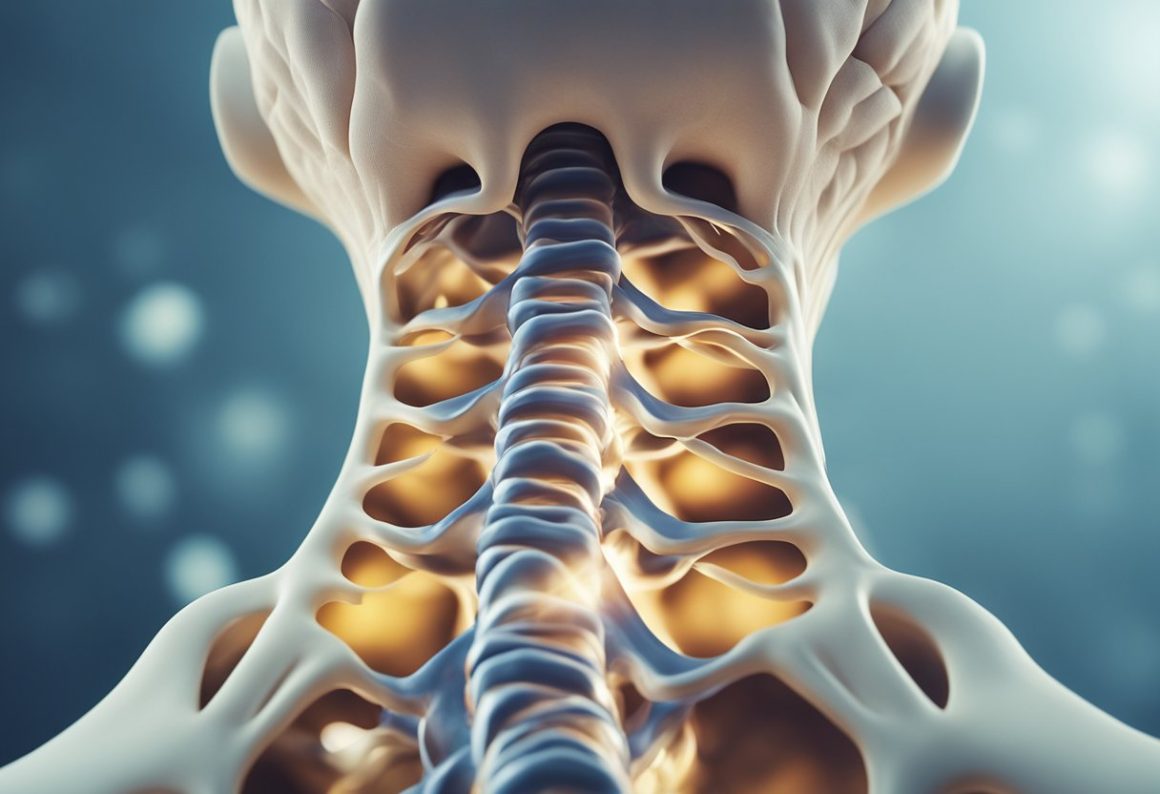A pinched nerve in the back is a condition where excess pressure is applied to a nerve by surrounding tissues such as bones, cartilage, muscles, or tendons. This pressure disrupts the nerve’s function, causing pain, tingling, numbness, or weakness. A common misconception is that pinched nerves are only a result of spinal issues, but they can also stem from other conditions, such as repetitive motions or rheumatoid arthritis, leading to nerve compression in various regions of the back.

The symptoms of a pinched nerve vary depending on the location and severity of the nerve compression. They may be acute or chronic, with some individuals experiencing episodic discomfort while others face persistent issues. Diagnosis typically involves a physical examination, medical history review, and possibly imaging tests like MRI or CT scans to pinpoint the source and extent of the nerve compression. Early diagnosis and treatment are crucial for preventing long-term damage and alleviating symptoms effectively.
Treatment options for a pinched nerve in the back range from conservative approaches—such as rest, physical therapy, and medications—to more invasive procedures like injections or surgery in severe cases. Lifestyle modifications and ergonomics play a crucial role in both treatment and prevention of future episodes. For many patients, a combination of treatments may be necessary to manage the condition and improve their quality of life.
Key Takeaways
- A pinched nerve occurs when a nerve is compressed by surrounding tissues, causing pain and other symptoms.
- Diagnosis involves a physical exam and possibly imaging tests to identify the source of nerve compression.
- Treatment can include rest, physical therapy, medication, and sometimes surgery, with lifestyle changes aiding prevention and management.
Understanding Pinched Nerves

A pinched nerve occurs when excessive pressure is applied to a nerve by surrounding tissues. This section explains the causes, common symptoms, and the relevant anatomy of the back.
Causes of Pinched Nerves
Pinched nerves in the back are often the result of:
- Disc herniation: When the soft center of a spinal disc pushes through a crack in the tougher exterior casing.
- Bone spurs: Enlargements on the bones that make up the spine can compress nearby nerves.
- –Spinal stenosis: Narrowing of spaces within your spine can put pressure on the nerves that travel through the spine.
Symptoms of a Pinched Nerve
Individuals experiencing a pinched nerve may notice:
- Pain: This may be sharp or radiating, potentially worsening with certain movements.
- Numbness or decreased sensation: Often in the area served by the nerve.
- Tingling or ‘pins and needles’: Suggesting nerve irritation or damage.
- Weakness: Especially with certain activities that may strain the affected nerve.
Anatomy of the Back
The back consists of a complex structure of bones, muscles, and nerves. Key components include:
- Vertebrae: The series of bones forming the spinal column.
- Discs: Pads between vertebrae that cushion and permit movement.
- Nerves: Like the spinal nerve roots that branch off the spinal cord and can become pinched by surrounding structures.
Treatment and Management
Effective management of a pinched nerve in the back requires a combination approach that includes self-care remedies, medical interventions, and preventive strategies to ensure long-term relief and reduced risk of recurrence.
Self-Care Remedies
- Rest: Limit activities that aggravate the condition.
- Heat and Ice: Apply heat or ice packs to reduce inflammation.
- Correct Posture: Maintain proper posture to alleviate pressure on the nerve.
- Over-the-Counter Pain Relievers: Ibuprofen or acetaminophen may help reduce pain.
Medical Treatments
- Physical Therapy: Tailored exercises can strengthen muscles and relieve nerve compression.
- Medications: Prescribed anti-inflammatory drugs or muscle relaxants might be used.
- Injections: Corticosteroid injections can help to reduce swelling and pain around the nerve.
- Surgery: In severe cases, surgery might be necessary to relieve the pressure on the nerve.
Prevention and Lifestyle Changes
- Exercise Regularly: Engage in activities that maintain back strength and flexibility.
- Weight Management: Stay within a healthy weight range to minimize stress on the back.
- Ergonomics: Use ergonomic furniture and equipment at work.
- Quit Smoking: Smoking can increase the risk of disc and nerve damage.
By incorporating these treatments and modifications, individuals can find significant relief from the symptoms of a pinched nerve.
Frequently Asked Questions
In this section, readers will find answers to common queries regarding a pinched nerve in the back, including treatment options, symptom identification, recovery indications, and self-care tips.
What are the common treatments for a pinched nerve in the lower back?
Treatment for a pinched nerve in the lower back often starts with rest, ice, and heat therapy, followed by over-the-counter pain relievers like ibuprofen. Physical therapy exercises, chiropractic adjustments, and, in some cases, corticosteroid injections may be recommended. Surgery is considered when conservative treatments are not effective.
How can you identify the symptoms of a pinched nerve in the back?
Symptoms of a pinched nerve in the back include sharp or burning pain, tingling sensations, numbness, and muscle weakness in the affected area. The discomfort may radiate along the nerve path into the arms or legs, depending on the nerve affected.
What are the indications that a pinched nerve is healing?
Signs that a pinched nerve is healing may include a gradual decrease in pain, reduced numbness, and restoration of strength and flexibility. Improved range of motion and decreased reliance on pain medication also indicate healing progress.
How can one alleviate a pinched nerve in the upper back?
Alleviating a pinched nerve in the upper back can be achieved with rest, proper posture, and ergonomic adjustments to reduce strain. Over-the-counterpain relief, gentle stretching exercises, and the use of a supportive brace or pillow might also help relieve symptoms. Consultation with a healthcare provider is essential to create a tailored treatment plan.
What sensations are associated with a pinched nerve in the back?
A pinched nerve in the back can cause varied sensations, including sharp or aching pain in the back, neck, or extremities. It may also cause tingling, ‘pins and needles,’ increased sensitivity, or diminished sensation along the affected nerve.
Do pinched nerves resolve without medical intervention, and what is the typical recovery timeline?
Some pinched nerves may resolve without extensive medical intervention, with recovery times ranging from a few days to several weeks, depending on the severity and underlying cause. However, persistent symptoms or severe nerve compression often require medical evaluation and possibly physical therapy, medication, or surgical intervention for proper healing.
14 comments on “Pinched Nerve in Back: Understanding Causes and Solutions” Add yours →